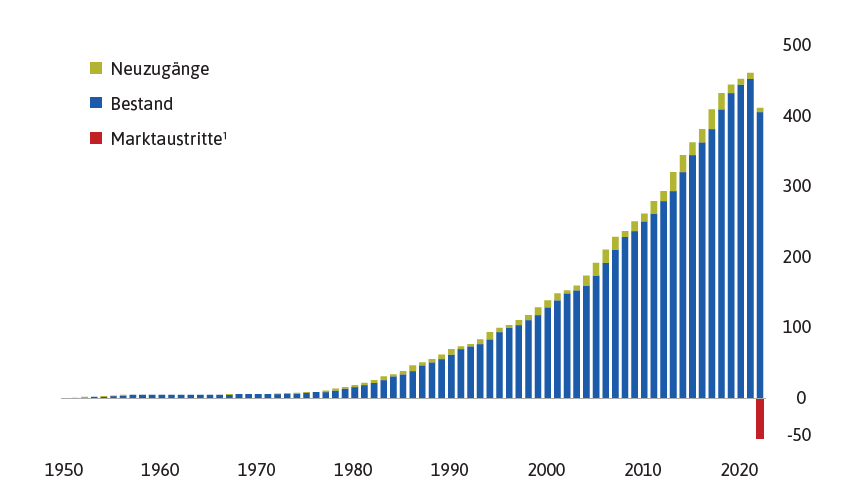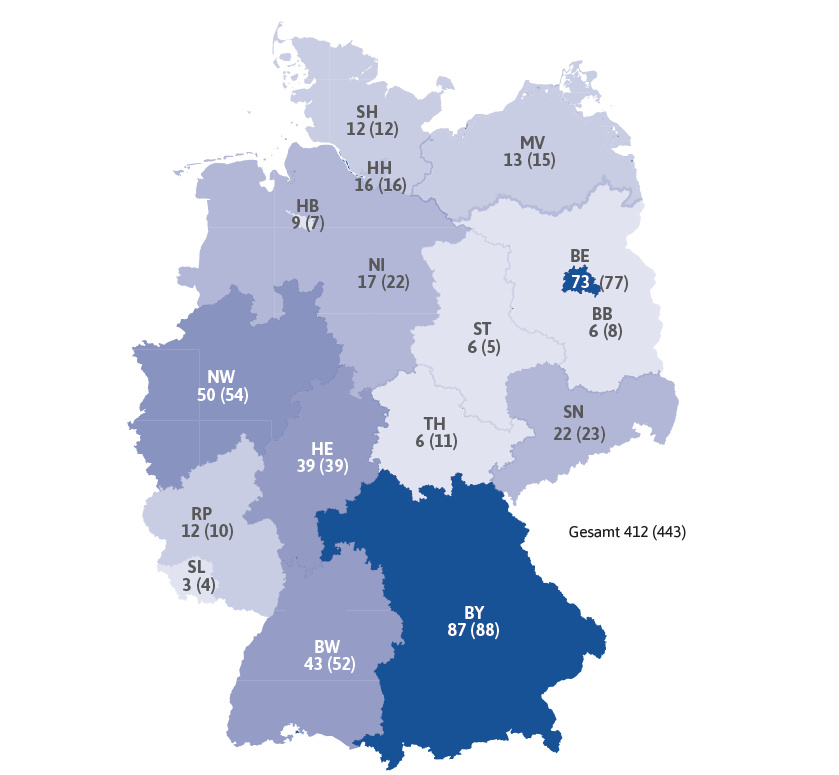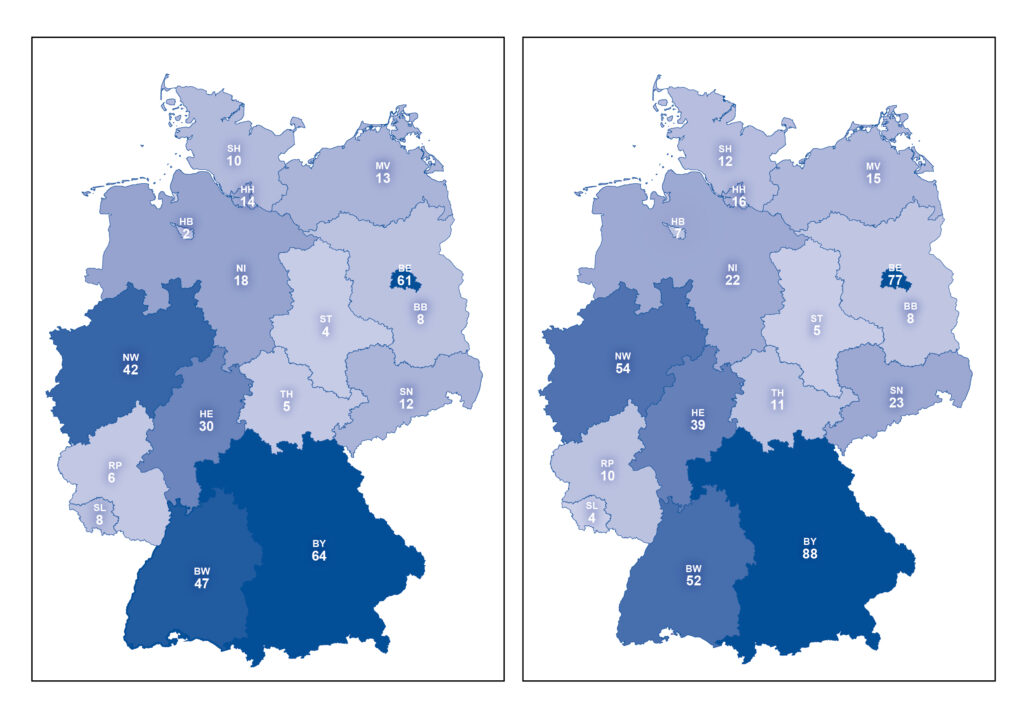After many years of growth in part double digits, the film festival sector also came under pressure in 2020/2021, which led to losses of around 10 percent of Germany’s overall film festival volume. However, with 412 film festivals in 2022, the film festival landscape still characterizes the entire federal territory, even if the distribution varies significantly between south and north as well as west and east. Today, the film festival sector makes a significant contribution to film cultural diversity in urban areas and, in some cases, a fundamental supply of cinemas in rural areas. New physical, virtual and dual festival offerings continued to be developed in 2022, and around 50 film festivals currently see themselves as offering dual programming. The declining market share of European cinema productions reported by the European Audiovisual Observatory for the EU confirms the growing importance of the film festival sector as an independent form of exploitation.
This is an insight into the analysis of the German film festival sector in 2022, first published in Filmstatistisches Jahrbuch 2023. Das Datenkompendium der Filmwirtschaft. Wilfried Berauer/SPIO, Wiesbaden 2023.
Cumulative growth of the German film festival sector 1950 – 2022

As a result of the considerable number of film festival losses in 2020/2021, the individual market exits were also systematically included. This observation makes it clear that the film festival sector is not alone in experiencing constant growth, but is subject to strong dynamics.
new entries (green)
stock (blue)
market exits (red)
Number of film festivals by federal state 2022 (2021 in brackets)

After the years of the pandemic, there is a decimation of 56 film festivals in 2022 compared to 2021. Including the new entries, 10 federal states are affected by losses. Stability or a plus is seen above all in the city states of Hamburg and Bremen. In addition, the relevance of a state as a media location still correlates with the number of film festivals it hosts. The two strongholds are Berlin and Bavaria of the German film festival sector.
Distribution of film festivals in comparison to other federal states – 2013 and 2021

The comparison of festival density by federal state makes it clear that increases were recorded throughout Germany in the period between 2013 and 2021. It is also evident that the two strongholds of Berlin and Bavaria have not lost their status. Moreover, it shows that the number of festivals also correlates directly with the role of a federal state as a media hub.
Despite its diversity, the German film festival landscape, from regional special interest festivals to the Berlin International Film Festival (Berlinale), has proven to be remarkably innovative, flexible and, above all, proactive in responding to the challenges of disruptive media change. Over the years, numerous festivals have gradually expanded their sphere of action far beyond their original function as a platform for the presentation of (new) film works and talents in the direction of highly diversified media ventures, acting not only as impulse generators and motors among themselves, but also as valuable blueprints and trendsetters for the cinema and film industry.
